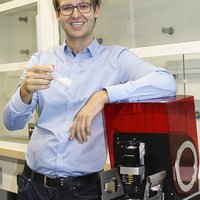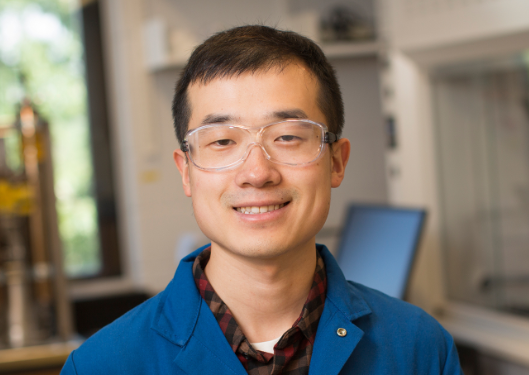Developing efficient methods for catalysis has always been a
major focus in electrochemical research. Dr. Song Lin, assistant professor at
Cornell University, has attracted the attention of his peers with two
outstanding studies.
The conversion of carbon dioxide to carbon-based fuels has
long been an important research topic in the energy sector. To address this
challenge, Lin’s group has developed porous materials that employ cobalt
porphyrins to facilitate carbon dioxide reduction in an efficient and robust
fashion. Lin’s work has significantly improved the conversion efficiency,
catalyst stability, and product purity of such processes.
Lin has also worked to address issues of cost, waste
production, and lengthy syntheses associated with the production of diamines in
the pharmaceutical industry. Lin’s group developed an electrochemical reaction
to catalytically furnish vicinal diamines and the study was published in Science
and was highly praised by experts in the field. The electrochemical synthesis of these
highly sought-after chemical motifs represents a promising direction for future
chemical research.
Lin says that each of these discoveries comes with a unique
story. Lin spent much of his Ph.D. work engaged in organic synthesis and as a
postdoctoral fellow at the University of California, Berkeley, he has begun to
focus on the application of electrochemistry in the field of energy. During his
postdoc, another group at the university happened to be studying the use of
porous materials to adsorb carbon dioxide to reduce greenhouse gas emissions. At
the same time, Lin was also studying the catalytic reduction of carbon dioxide.
The confluence of these two projects led Lin to collaborate with the other
group to try to combine the two research topics to address the issue of CO2
conversion.
Eventually, Lin's group united the
two projects and constructed covalent organic frameworks that could both
capture and convert CO2 into more useful products. The
material designed by the group has a Faradaic efficiency of 90%, a turnover rate
of 290,000 times per second, and offers a 26-fold increase in activity compared
to previous molecular complexes used for the same purpose.
After this project, Lin came to Cornell University to start
his independent research career, where his interests began to turn to organic
synthesis in the context of drug discovery. Hoping to convert abundant olefins
into value-added products, Lin’s group found an electrochemical method for
synthesizing vicinal diamines. The study, published in Science and in Nature
Protocols, was praised by peer reviewers, who described the project as
"among the most useful electrochemical reactions to
be invented in the past decade."
It is worth mentioning that Lin has paid great attention towards
applying this discovery in industrial settings. Lin is now collaborating with
pharmaceutical companies to further implement his group’s diamine synthesis and
he is interested in continued entrepreneurship around his discoveries in the
future.




